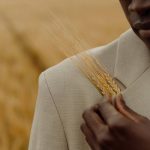Jute geotextile fabric is a natural, biodegradable material made from jute fibers that you use to control soil erosion and stabilize landscapes sustainably. It’s strong yet porous, allowing water flow while holding soil in place, which helps your plants grow better. Plus, it naturally resists weeds and supports biodiversity. Though it breaks down faster than synthetics, proper use maximizes its benefits for eco-friendly projects. Keep exploring to see how jute fits into sustainable farming and environmental work.
Table of Contents
Key Takeaways
- Jute geotextile fabric is made from natural jute fibers used for soil stabilization and erosion control.
- It is biodegradable and environmentally friendly, supporting sustainable agricultural and environmental practices.
- The fabric’s high tensile strength and porosity stabilize soil while allowing water flow and filtering soil particles.
- It promotes plant growth, reduces soil erosion, and acts as a natural weed barrier.
- Jute geotextile is cost-effective but requires proper installation and monitoring due to faster biodegradation.
Understanding the Properties of Jute Geotextile Fabric
Although you mightn’t realize it, jute geotextile fabric offers a unique combination of natural strength and biodegradability that makes it ideal for soil stabilization and erosion control.
Jute geotextile fabric combines natural strength and biodegradability, perfect for stabilizing soil and preventing erosion.
When you use jute fabric, you benefit from its high tensile strength, which helps hold soil in place during heavy rains or strong winds. You’ll also appreciate its porosity, allowing water to pass through while filtering out soil particles, preventing clogging.
Jute’s rough texture helps anchor it firmly to the ground, reducing displacement over time. Plus, because it’s made from natural fibers, it breaks down harmlessly, enriching the soil instead of polluting it.
Understanding these properties lets you choose jute geotextile fabric confidently for projects needing reliable, eco-friendly ground support.
Applications of Jute Geotextile in Environmental Projects
Jute geotextile fabric’s natural strength and biodegradability make it a versatile choice for many environmental projects.
When you’re working on soil erosion control, jute fabric stabilizes slopes and riverbanks, preventing soil loss while allowing vegetation to grow through it.
You can also use it for sediment control in construction sites, as it filters runoff and traps sediments effectively.
In reforestation and afforestation efforts, jute mats protect young plants from harsh weather and retain moisture in the soil.
Additionally, if you’re restoring wetlands, jute geotextiles help maintain soil structure and support native plant growth.
Benefits of Using Jute Over Synthetic Geotextiles
When you choose jute over synthetic geotextiles, you’re picking a more eco-friendly option that breaks down naturally without harming the environment.
You’ll also find jute to be cost-effective, offering strong durability for many projects.
Let’s explore how these benefits make jute a smart choice for your work.
Environmental Impact Comparison
Because synthetic geotextiles rely on petroleum-based materials, they contribute greatly to environmental pollution and resource depletion. When you choose jute geotextile fabric, you’re opting for a biodegradable, renewable resource that breaks down naturally without leaving harmful residues. This choice notably reduces plastic waste and lowers your project’s carbon footprint.
Here’s a quick comparison to help you see the environmental impact clearly:
| Aspect | Jute Geotextile | Synthetic Geotextile |
|---|---|---|
| Material Source | Renewable plant-based | Petroleum-based |
| Biodegradability | Fully biodegradable | Non-biodegradable |
| Environmental Waste | Minimal, decomposes naturally | Persistent plastic pollution |
Cost and Durability Benefits
Although synthetic geotextiles may seem durable, you’ll find that jute offers a cost-effective alternative without sacrificing performance.
Jute fabric is naturally strong and can handle soil stabilization and erosion control efficiently, often matching synthetic options in these tasks. Plus, jute’s biodegradability means it breaks down harmlessly, reducing disposal costs and environmental impact.
When you choose jute, you save on upfront material expenses since it’s generally cheaper to produce and transport. Its ability to retain strength during its functional lifespan guarantees your project stays protected until the vegetation establishes.
How Jute Geotextile Supports Soil Stabilization and Erosion Control
You’ll find that jute geotextile fabric strengthens soil by reinforcing its structure and improving water drainage.
It also creates the perfect environment for vegetation to take root and grow.
These benefits work together to keep soil stable and prevent erosion effectively.
Soil Reinforcement Benefits
When you use jute geotextile fabric, you enhance soil stability by reinforcing the ground and reducing erosion. This natural fiber fabric acts as a protective layer, holding soil particles together and preventing them from washing away during heavy rains or strong winds.
By distributing loads evenly, it strengthens weak soil, making it less prone to shifting or collapsing. You’ll find it especially useful in slopes, embankments, and construction sites where soil integrity is vital.
Plus, jute’s biodegradable nature means it supports soil health without leaving harmful residues. With jute geotextile, you improve the soil’s mechanical strength while promoting vegetation growth, which further stabilizes the area.
This combination helps you maintain durable, long-lasting landscapes and prevents costly soil damage.
Water Drainage Enhancement
Jute geotextile fabric enhances water drainage by allowing moisture to pass through while retaining soil particles.
When you use jute fabric, it acts as a natural filter, preventing soil from washing away during heavy rains or irrigation. This permeability helps reduce waterlogging and directs excess water away from vulnerable areas.
By maintaining proper drainage, you’ll avoid soil erosion and promote ground stability, especially on slopes or embankments. Jute’s fibrous texture guarantees that water flows smoothly without carrying away precious topsoil.
So, when you install jute geotextiles, you’re not just protecting soil; you’re improving its structure and resilience against erosion caused by water runoff.
This makes jute an excellent choice for sustainable soil stabilization projects that require efficient water management.
Vegetation Growth Promotion
Although soil stabilization relies heavily on physical barriers, promoting vegetation growth plays an equally essential role in controlling erosion.
Jute geotextile fabric supports this process by creating an ideal environment for plants to thrive. When you use jute, you:
- Provide a natural mulch that retains moisture, helping seeds germinate faster.
- Protect young plants from harsh weather and foot traffic.
- Allow air and water to pass through, ensuring roots get enough oxygen and hydration.
- Decompose gradually, enriching the soil with organic matter that boosts plant growth.
The Role of Jute Geotextile in Sustainable Agriculture
Because sustainable agriculture relies on eco-friendly materials, you’ll find jute geotextile fabric plays an essential role in soil conservation and moisture retention.
When you use jute geotextile, it naturally protects the soil from erosion caused by wind and water. It also helps you maintain consistent moisture levels, which is vital for healthy crop growth.
Jute’s biodegradable nature means it supports the environment without leaving harmful residues behind. Plus, it promotes microbial activity in the soil, enhancing fertility and plant health.
By incorporating jute geotextile into your farming practices, you’re actively supporting sustainable land management and reducing dependency on synthetic materials.
This way, you’re not only protecting your crops but also contributing to a healthier planet for the future.
Challenges and Considerations When Using Jute Geotextile
While jute geotextile offers many benefits for sustainable agriculture, you should also be aware of certain challenges when using it. Understanding these considerations helps you maximize its effectiveness.
- Durability: Jute decomposes faster than synthetic fabrics, so it may need more frequent replacement.
- Moisture Sensitivity: It absorbs water easily, which can weaken the fabric if not managed properly.
- Pest Attraction: Natural fibers can attract insects, requiring you to monitor and protect your crops.
- Installation Care: You must handle jute carefully during installation to avoid tearing or stretching.
Frequently Asked Questions
How Long Does Jute Geotextile Fabric Typically Last Outdoors?
Think of jute geotextile like a loyal guardian who serves you for about 1 to 3 years outdoors. You’ll find it weathers seasons well but eventually fades, making way for new protection and growth.
Can Jute Geotextile Fabric Be Recycled or Composted After Use?
You can compost jute geotextile fabric since it’s biodegradable and eco-friendly. However, recycling it is less common due to its natural fibers. Composting helps you reduce waste and enrich soil after its use outdoors.
What Is the Cost Comparison Between Jute and Synthetic Geotextiles?
Comparing costs, you’ll find jute’s price pleasantly plummets compared to pricey synthetic geotextiles. While synthetics boast strength, jute’s natural, sustainable savings make it a smart, sensible selection for soil stabilization and erosion control projects.
Is Jute Geotextile Fabric Resistant to Pests and Mold?
You’ll find jute geotextile fabric naturally resistant to pests due to its lignin content, but it’s more prone to mold in damp conditions. So, you’ll need proper ventilation and care to prevent mold growth effectively.
How Is Jute Geotextile Fabric Manufactured or Processed?
Imagine spinning a golden thread from nature’s loom. You’ll harvest jute fibers, clean, comb, then weave them tightly into fabric. This careful crafting gives you strong, eco-friendly geotextile material ready to protect and support soil.
- Jaclyn Smith Fabric Coconut: a Review of This Rayon/Polyester Blend - June 29, 2025
- Jaclyn Smith Fabric Coconut: a Review of This Rayon/Polyester Blend - June 29, 2025
- How to Get Coconut Oil off Fabric Without Washing - June 29, 2025







